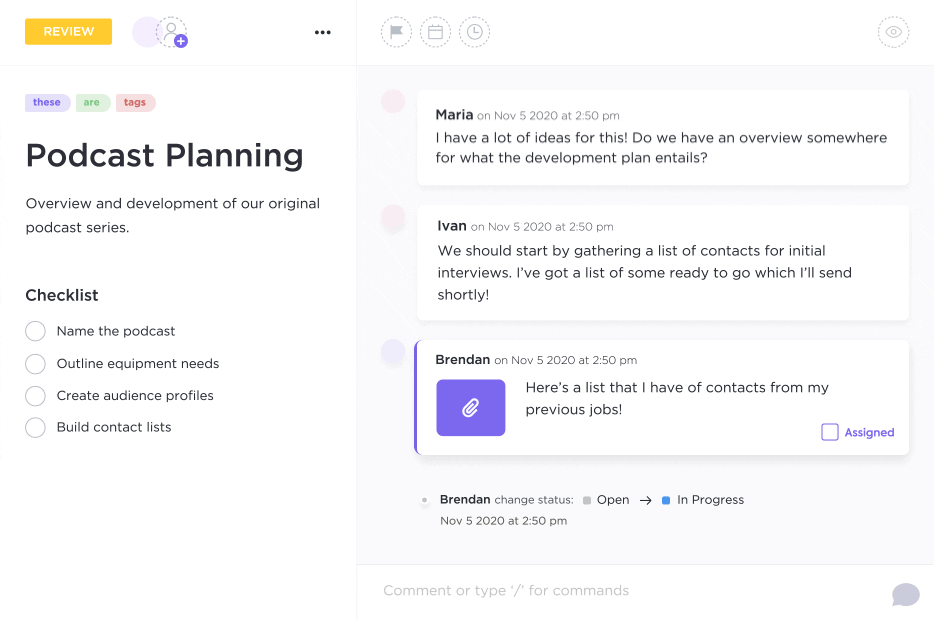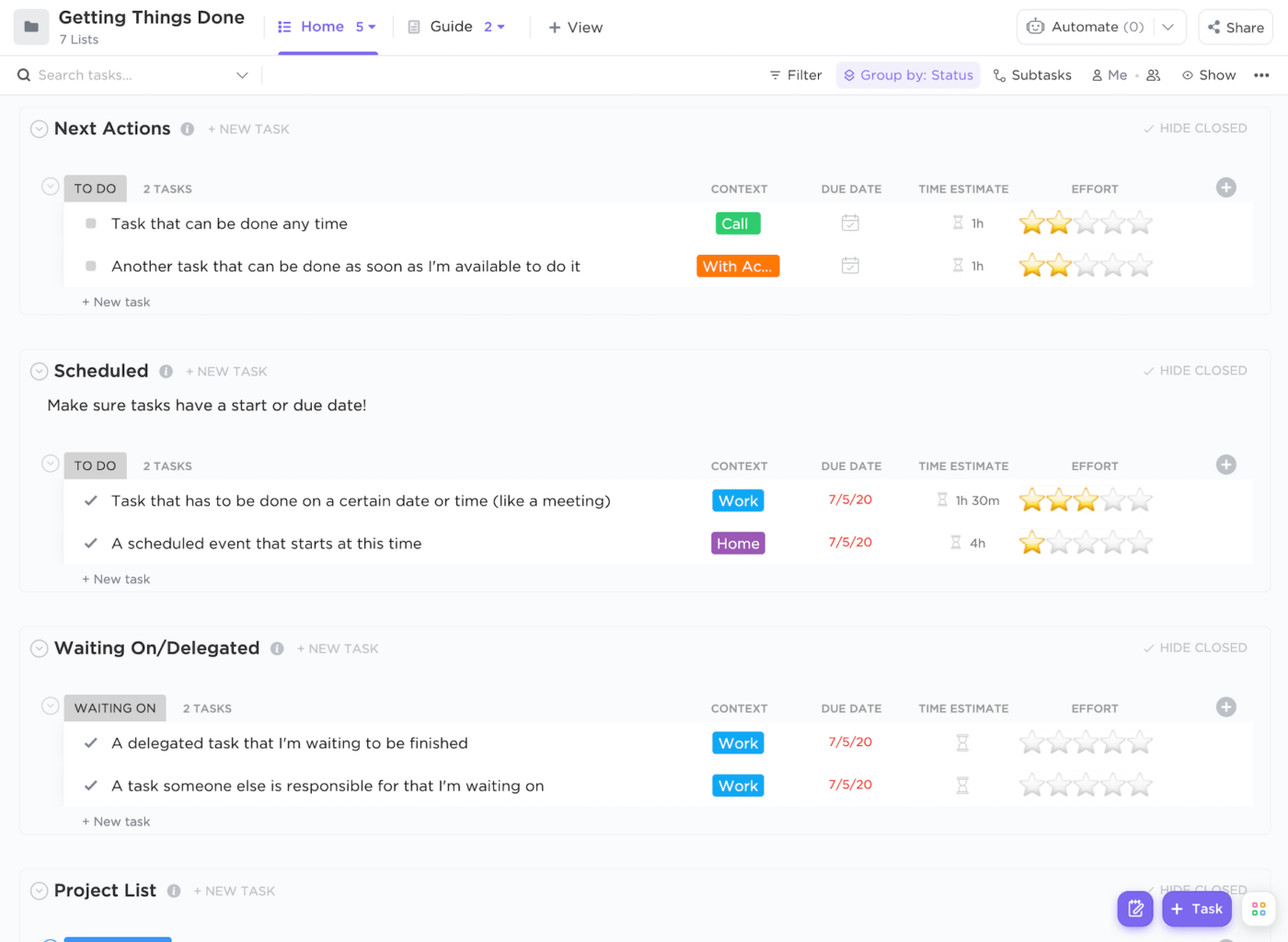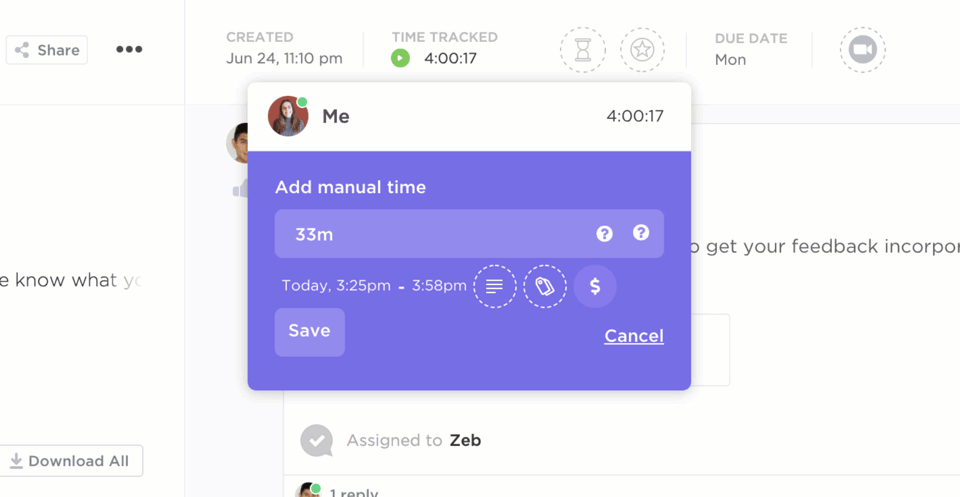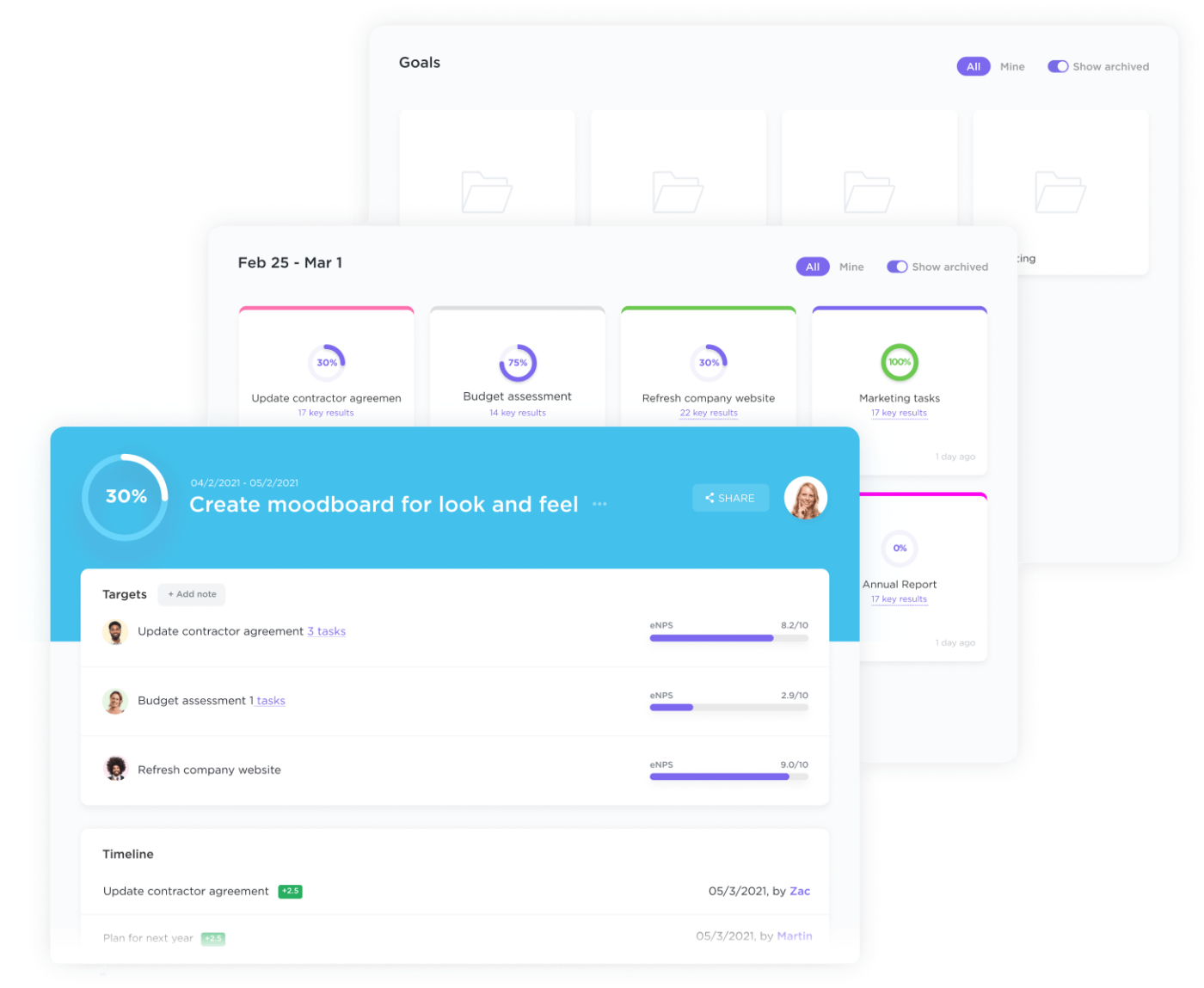

“I’ll do it when I’m in the mood.”
“Don’t worry. It’s not due for another week.”
“I don’t feel like.”
“Ooh, what’s this YouTube video about?” 👀
Ah, the refrains of the perpetual procrastinator. We’re all familiar with them, and we’ve all uttered similar things. In the end, we mostly complete whatever is needed of us, but likely with more stress, pressure, and mental discomfort than is required.
Why does this always happen to us?
It’s most likely because we need to build up our self-discipline—the ability to get things done, no matter your mood, the circumstances, or your inconsistent motivation levels.
This article will cover 10 of the most effective self-discipline examples and tips to improve your decision-making skills, reduce workplace anxiety, and set yourself up for success. 🏆
What is Self-Discipline?
Self-discipline is what makes the world go round. It’s what makes you go to the gym for a span of years and work hard in your career. It teaches you self-control and how to kick bad habits to the curb. It’s simply the ingredient that is necessary to stay persistent and resilient to accomplish your goals.
10 Self-Discipline Examples and Tips for Developing Good Habits
Self-discipline is like a muscle—the more you exercise it, the stronger it gets. And the stronger it gets, the easier it becomes to make better choices and maintain self control, especially when it matters.
So to help you build self-discipline, nurture your mental health, and get rid of bad habits that are preventing you from performing at your best, here are 10 self-discipline tips and examples to practice and incorporate into your life:
1. Give yourself fewer decisions
Best for managing expectations, staying on track, and reducing decision fatigue
People think of willpower as an all-or-nothing thing—we either have it or don’t. But willpower is best thought of as a tank that can fill and empty throughout the day and can be influenced by our choices and environment.
So-called decision fatigue can also be understood as willpower fatigue.
You can say no to the temptation once (that’s one rep of your willpower muscle) and then say no to it again another dozen times later in the day (that’s more reps). But come the evening, that poor willpower muscle is worn out. So you arrive home after a long hard day and think, “Well, I’ve been so good. I deserve it,” and you finally succumb to temptation.
PRO TIP
Try to put as much as possible on autopilot and create a system that works for you. Set up a system that reduces the need to use mental energy yet keeps you accountable for what you need to do. You’ll no longer have to decide on the spot every time; instead, you decide once, set it, and move on.
To help you reduce decision fatigue, you can plan your to-lists and schedule in advance on a digital planner with checklists or a digital Calendar. Planning and seeing your priorities can help you mentally prepare for your tasks, manage time better, and, most importantly, stick to your scheduled tasks.
Bonus: Learn how to say no professionally!

You can also train your brain to tap into productivity mode by organizing your tasks and creating a system that motivates and excites you. One way to do this is to implement the GTD system and use resources such as the Get Things Done Template by ClickUp to help you stay on track and focused on achieving your goals.

2. The 40% rule
Best for beating self-limiting beliefs
The 40% rule is a principle that can help you push through when things get tough and a quick way to get around self-limiting beliefs.
When you’re beginning to feel tired mentally and physically, you may feel like giving up, but in truth, you are only at forty percent of what you are truly capable of achieving.
Why would this happen?
Well, the boundary is something your own brain creates and not an objective fact about reality. Recall that the primitive part of the brain is the brainstem, the primary function of which is to keep you safe. This instinctual part of your brain wants to protect you from uncomfortable and potentially dangerous situations—and it’s always better to be more cautious than less cautious, right?
So, as a result, you may feel physically exhausted, mentally worn out, or just plain scared at a point when you are not really in any danger. In fact, you may still have 60% more effort to give! You are capable of much, much more than you think you are. Even when you genuinely feel too tired to carry on, you can recognize that this is just an excuse—you are not done; you are only forty percent done.
KEY TAKEAWAY
Self-discipline is not about being some kind of superhuman but rather about not giving in when your body and mind tell you, “I can’t do more.” Your brain is so powerful that when it tells you, “You can’t do more,” that’s precisely what it believes. But what if you tell it, “You can do more?”
3. The 10-minute rule 1.0
Best for building patience and avoiding the need for instant gratification
Given our more developed brains, it’s reasonable to think that humans are superior decision-makers to all the other primates of the world.
It’s somewhat surprising, therefore, to learn about an experiment that showed that when given the choice of whether to wait for one treat or wait even longer for an accumulation of treats, chimpanzees could delay their gratification and wait. Chimpanzees aren’t smarter than us, yet they make better decisions at least as often as we do.
Why?
Well, the problem is actually in how developed our brains are. We overthink decisions with somewhat obvious answers, and we can rationalize bad behavior that robs us of more desirable outcomes. We’re not always sure what’s a real reason for hesitation and what’s just a justification or excuse. You can imagine how this takes away from our overall efficacy.
That’s where the 10-Minute rule comes in.
PRO TIP
If you want something, wait at least ten minutes before acting on it. It’s simple and leaves no room for debate or excuses. When you feel an urge, build self-discipline by forcing yourself to wait for 10 minutes before giving in to whatever the urge is. If you’re still craving it after ten minutes, then have it. Simply by choosing to wait, you remove the “immediate” from immediate gratification—building discipline and improving decision-making.
4. The 10-minute rule 2.0
Best for prioritizing tasks
The 10-minute rule is both a productivity trick and a way to push through procrastination. This strategy will help you stay focused and improve your efficiency.
PRO TIP
Create a to-do list of tasks that you can do in 10 minutes. If a task takes longer than ten minutes, break it up into smaller tasks.
To help you implement this self-discipline habit, you can use a project management tool like ClickUp with a built-in time tracker, priority flags to help you prioritize urgent tasks, and subtasks to break down more complex tasks into smaller, more manageable steps.

You could also use the Priority Matrix Template by ClickUp to help you prioritize your tasks and focus on your most important work to avoid feeling overwhelmed or disorganized.

5. The 70% rule
The 70% rule is a great trick to help you shift your mindset and help you act even when you’re feeling uncertain, scared, or unwilling.
This rule was purportedly created by Jeff Bezos, who undoubtedly used it to help him achieve “escape velocity” out of a state of fear and indecision and get on the path of making choices, receiving feedback, and adjusting along the way.
In other words, you’re lowering the threshold for taking action. You don’t have to be one hundred percent on board—but seventy percent is enough to get going!
PRO TIP
Beat procrastination and keep your eye on the prize by documenting your goals and keeping them front and center at all times to remind you to keep pushing through when your mind is telling you no. You can use goal-setting apps like ClickUp Goals to keep you on track to hit your targets and monitor your progress so you always know how close or far you are from achieving your goals.

6. How to surf the urge
Best for improving self-control, reducing distraction, and overcoming temptation
One thing that threatens our self-discipline is temptation and distraction.
Urge surfing lets you observe an urge without acting on it. ☝️
An urge is simply a feeling of intense desire for something. That’s all it is. Importantly, it’s not a compulsion to act. You can intensely desire something natural and good for you or something that has purely negative effects on you.
Does this mean just ignoring the distraction, urge, or temptation? Not quite. This is because when you try to ignore something, you may give it more psychological power and even prolong a sensation that would have ordinarily not lasted that long. A concept or sensation usually becomes stronger when ignored, not weaker. After all, ignoring a wave in the ocean doesn’t mean it’s not there, and you won’t feel it crash into you.
If we can do this for long enough, the urge does pass, and we are once again calm and balanced. Most of the time, just a proverbial taste is enough.
PRO TIP
You can practice journaling to help you keep track of and monitor your patterns and behaviors. Use a notebook or a digital note-taking app like ClickUp Docs and Notepad to capture and review your thoughts.

7. Change your relationship with discomfort
Best for shifting your mindset about obstacles and using them to help you grow
Your ancestors had a basic code for living: avoid pain; seek pleasure. And if something is scary, avoid that, too.
But as a conscious and self-determining human being, you know that there is some wiggle room for negotiation! In order to grow, you must feel some pain and fear sometimes.
The experience of growth is innately uncomfortable. Nobody ever made sweeping life changes or achieved impressive goals without breaking a sweat or feeling a little flustered. It’s hard. If it weren’t hard, then everyone would be ultra-evolved and super successful, wouldn’t they?
KEY TAKEAWAY
It’s time to change your expectations about how you feel daily. In the end, it’s just discomfort. That’s all. Not white-hot fear or anxiety or terror. Just discomfort. It’s something out of the ordinary, but just because it is unfamiliar doesn’t mean it’s bad. Changing your relationship with discomfort is the key to next-level personal productivity that will move you forward in your life.
8. Action creates momentum
Best for creating momentum and motivation from taking action
Whatever your goals are, motivation plays an important role and is one of the most important ingredients influencing your drive and ambition, but we’re thinking about it all wrong.
When we think about motivation, we look for something to light a spark in us and make us jump up from the couch and dive deeply into our tasks. We want motivation that causes action.
There are a few problems with this. This type of motivation, if you ever find it, is highly unreliable. If you feel you need motivation that causes action, you’re doing it wrong.
For instance, a writer who feels they are unable to write without some form of motivation or inspiration is going to stare at a blank page for hours. End of story.
The truth is, you should plan for life without a motivating kickstart. Seeking that motivation creates a prerequisite and additional barrier to action. Get into the habit of proceeding without it. And surprisingly, this is where you’ll find what you were seeking—action leads to motivation, more motivation, and eventually momentum.
KEY TAKEAWAY
Your own actions will be your fuel to move forward. After you’ve taken your first step and have seen progress from your efforts, motivation will come easier and more naturally, as well as inspiration and discipline. You’ll fall into a groove, and suddenly, you’ll be in your work mode.
10. The 10-10-10 rule
Best for helping you analyze the short and long-term effects of your actions or lack thereof
No matter how well you visualize your future self or how skilled you become at delaying gratification, you’ll still inevitably face temptations or urges to lose discipline that can overwhelm you.
If that means being less rigorous about your diet for one meal while you’re out with friends, it’s probably not a big deal. But if that means that you’re about to lose your willpower and relapse into a harmful addiction from your past, you’ll want to have a tool up your sleeve to help you stay disciplined.
That’s where the 10-10-10 Rule comes in—a reflection and time management technique.
KEY TAKEAWAY
The next time you feel that you’re about to give in to an urge or temptation, stop and ask yourself how you will feel ten minutes, ten hours, and ten days from now. This rule can be effective because it forces you to think about your future self and see how your actions will affect you—for better or worse.
We often know that we are losing discipline or doing something harmful at the moment, but that’s not enough to stop us from doing it because we don’t have any connection to our future selves that will have to deal with the consequences. The 10-10-10 Rule quickly creates that connection, which keeps you aware of your actions or lack thereof.
Master Yourself: Become Self-Disciplined with Good Habits
Now, I realize that even reading through this list might be overwhelming and actually achieve the opposite of the intended effect: to add even more to your plate and cause even more procrastination and avoidance of responsibilities.
That’s why I implore you to start small and just choose one to try to implement this week. The next week, try another.
Do you see where I’m going with this? It’s never too late to practice self-discipline. Make small lifestyle and mindset changes, and create systems to support your good habits. You can use tools like ClickUp as a habit tracker, goal-setting tool, journal app, to-do list, and more to keep you focused on your goals and motivated to stay self-disciplined.
And over time, you’ll develop the long-term self-discipline and internal compass you need to make better choices and succeed in anything you do!

Guest Writer:
Pete Hollins is a bestselling author and human psychology and behavior researcher. He has a BS and MA degree in psychology and has worked with dozens of people from all walks of life. After working in private practice for years, he has turned his sights to writing and applying his years of education to help people improve their lives from the inside out. To learn more from Pete, visit his website for a free 14-page ebook on 9 surprising psychology studies that will completely transform how you view the people around you.


